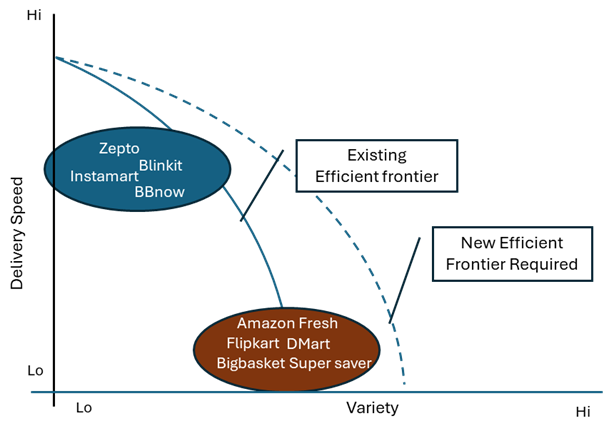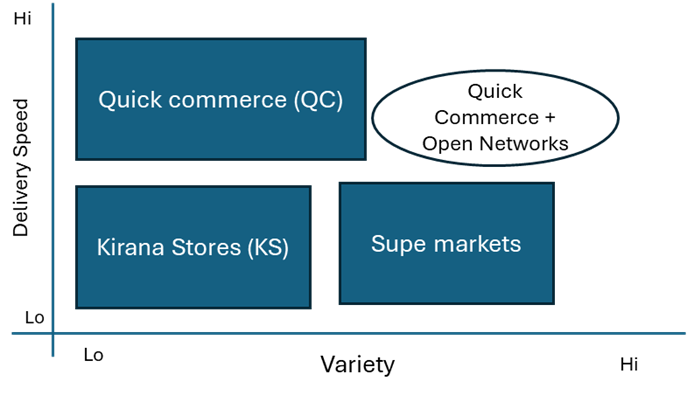
How open networks can help companies move from 'Quick Commerce' to 'Quick Commerce Plus'
Quick Commerce (QC) firms are trying to push supply chain frontiers by providing a wide variety of items at extremely low delivery times. Can Open Networks on Beckn-operated ONDC help QC firms develop the on-demand market sustainably?
 How do QC firms shift the delivery speed vs. variety trade-off frontier (See Figure 1) without a significant increase in cost and decrease in customer expectations?
Image: Shutterstock
How do QC firms shift the delivery speed vs. variety trade-off frontier (See Figure 1) without a significant increase in cost and decrease in customer expectations?
Image: Shutterstock
You are startled by your alarm at 7 am for an important meeting only to find an empty shower gel bottle with absolutely zero squeezes left. What do you do? Just open your phone, make a few clicks, and within minutes, you will have the shower gel delivered to your doorstep. That's Quick Commerce (QC), the newest consumer addiction on the block.
Launched to serve the needs of a time-starved, urban consumer seeking Uber convenience, the promise of a short, exact delivery time is a significant value addition in consumers' lives that QC firms Blinkit, Instamart and Zepto deliver. The business model's success has inspired Amazon, Flipkart and BigBasket to roll out their versions of 10 min convenience. QC platforms need to store goods close to customers in warehouses (known as dark warehouses) that cost much more (on a per square feet basis) than warehouses located in places farther than consumers. And punctuality requires a higher number of delivery executives to meet erratic demand.
The twin value propositions of speed and punctuality are spurring repeat purchases and higher average order value. However, repeat purchase also depends on the selection and availability offered by QC platforms. Consumers prefer a high 'Basket completion rate', i.e., a percentage of the products a customer needs are available while placing the order. Moreover, the minimum order value for free delivery forces customers to order a minimum basket size and the platform needs to offer customers a larger selection to meet it.
"Give an inch, and they will take a mile" is the pithy insight that all firms playing in the QC arena are discovering about their consumers. Apart from daily essentials, QC platforms now sell stationery, towels, ceiling fans, mixer grinders, and T-shirts. All of this adds to the second layer of costs—the inventory costs—the cost of the product (inventory) in the warehouse.
A typical QC warehouse that housed around 2,500 distinct products (Stock keeping units – SKUs) two years ago now stores about 6,000 SKUs. The inventory cost in the 'essentials' category sits on the QC platforms' seller's book, e.g., Moonstone Ventures LLP (for Blinkit). However, much of the 'non-essentials' or 'non-urgent' inventory cost is on either the books of the brands selling it or their distributors—this model is popularly called the marketplace model.
[This article has been reproduced with permission from SP Jain Institute of Management & Research, Mumbai. Views expressed by authors are personal.]



















